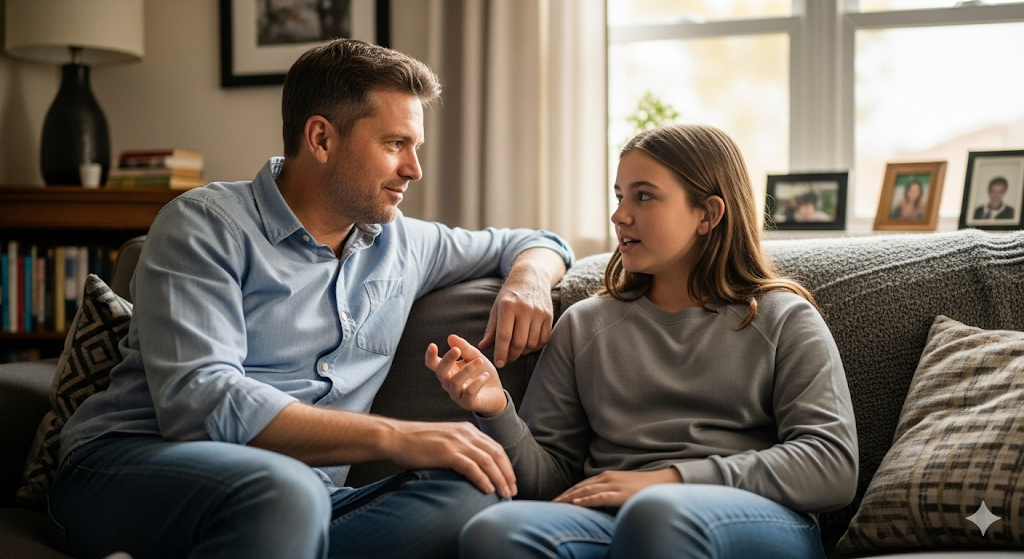You don’t overspend because you’re “bad with money.” You overspend because you’re human. After a relentless day – a snippy email, a lonely evening, a nagging sense you’re behind – your brain goes hunting for relief. A new cart full of possibility. A package on the way. Thirty seconds of calm. And then the feelings crash back with a side of guilt.
If you’ve ever thought, “Why do I keep doing this when I know better?” – you’re not alone. Emotional spending is a coping strategy, not a character flaw. It lights up the brain’s reward pathways, gives a fleeting sense of control, and – for a moment – quiets anxiety. Research-backed insights explain why the highs are so sticky and why the lows feel heavy afterward. For example, shopping can release dopamine – one of the brain’s “feel-good” chemicals – and even browsing or anticipating a delivery can create a mood lift, which helps explain why it’s so compelling in the moment Cleveland Clinic. When the behavior becomes compulsive or starts harming your life, it can resemble a behavioral addiction – something clinicians take seriously APA PsycNet.
This guide meets you where you are – frustrated and ready for change – and walks you through a practical, emotionally intelligent process to stop overspending without shaming yourself. We’ll use the LOWER method from ThatsFrustrating.com – Label, Own, Wait, Explore, Resolve – to go from “I can’t stop” to “I know what to do next.”
Why Emotional Spending Feels Good – Until It Doesn’t
- Mood repair in the short term: Purchasing – and even window shopping – can boost mood, distract from stress, and increase a sense of control, which temporarily reduces sadness and anxiety Cleveland Clinic.
- A cycle that drains over time: Relief fades quickly. If spending is your primary coping tool, you may feel shame, financial strain, or conflict at home – which then triggers the very emotions that send you back to the cart.
- It’s common and understandable: Emotional spending – also called retail therapy or impulse buying – sits on a spectrum. Occasional “treat” purchases are not a problem. When spending becomes the default response to distress, or when you can’t stop despite consequences, it may be time for new strategies Verywell Mind.
The LOWER Method – Your 5-Step Reset
The LOWER method from ThatsFrustrating.com is a simple, repeatable process that transforms a guilt spiral into constructive action:
- Label
- Own
- Wait
- Explore
- Resolve
Let’s walk through each step with scripts and tools you can use today.
L – Label: Call it what it is
Start by saying it out loud or writing it down: that’s frustrating when I do everything right all week and one stressful moment wipes out my progress. That’s frustrating when I feel lonely at night and shopping is the only thing that makes me feel better. That’s frustrating when my budget is tight and one “small treat” turns into three.
Labeling doesn’t fix the numbers – it steadies your nervous system so you can access better choices. The immediate goal is clarity, not correction.
O – Own: Shift from blame to agency
Bridge from the external situation to your internal truth: I feel frustrated when I scroll past midnight and wake up with buyer’s remorse. I feel frustrated when I promise myself “just this once” and then repeat the pattern. I feel frustrated when I crave relief and spending is the only lever I pull.
Owning your feeling reduces shame and increases choice. You’re not scolding yourself – you’re naming the signal beneath the swipe. That signal is pointing to needs like comfort, connection, novelty, rest, or reassurance.
If slow progress is part of the frustration, this companion guide can help you lower stress while you build momentum: Slow Financial Progress? Use the LOWER method to reduce your frustration.
W – Wait: Install a humane pause
Waiting is how you protect yourself from decisions made at peak emotion.
Try one or two of these micro-pauses:
- The 24-hour cart pause – move items to a wishlist and set a reminder for tomorrow.
- Five-breath reset – inhale 4 counts, exhale 6 counts, five times before any purchase.
- “Device distance” – place your phone in another room for 10 minutes when you notice the urge.
- One-swipe friction – log out of shopping apps and remove saved cards so any purchase requires intentional steps.
The goal isn’t perfection. It’s to reintroduce choice where compulsion tries to run the show.
E – Explore: Four practical ways to meet the need without overspending
You’ve labeled, owned, and paused. Now, give yourself better tools. Here are four targeted strategies – each pair emotional needs with concrete actions.
- Create a feelings-first budget – a legit line for comfort
- Name the need: comfort, novelty, reward, control.
- Assign a real number – a small “emotional spending” envelope you can use without guilt.
- Design rules that keep you safe: only from this envelope, never on credit, never mid-spiral.
- Use the “savor and save” trick – pick one special purchase you’ll enjoy repeatedly and skip noise buys.
- Replace the dopamine – same brain, healthier hits
- Quick mood lifts: brisk 7-minute walk, hot shower, favorite song on repeat, text a friend a voice note.
- Novelty without the bill: “add to cart – abandon” as a game, window shopping with a coffee then a photo instead of a purchase, library holds for that “new thing” feeling.
- Sensory resets: tidy a small surface, light a candle, brew tea – small, embodied rituals reduce the urge to self-soothe with spending.
Science note: Browsing and anticipating can give a hit of “happy hormones” – no purchase required Cleveland Clinic.
- Script the hardest moments – your spend-sober words
- When the urge spikes: “I’m allowed to want comfort. I can have it – tomorrow, within my envelope.”
- When sadness says “buy now”: “I’m choosing control. If I still want it after sleep, it’s waiting for me.”
- When you’ve clicked “buy”: “I can still course-correct. I’ll review in the morning – return or keep, without shame.”
- Build light tech boundaries – fewer traps, more intention
- Remove one app that tempts you and keep the web version only.
- Unsubscribe from two marketing emails a day for a week.
- Turn off “1-click” and delete saved cards.
- Move shopping apps to the last screen, wellness apps to the first screen.
If money tension involves kids or co-parents, try this emotionally intelligent approach: How to Talk to Your Kids About Money Without Stress.
R – Resolve: A 7-day plan you can repeat
Resolution doesn’t mean you never feel the urge again – it means you have a structure that moves you forward anyway.
Try this one-week rhythm:
- Day 1 – Inventory reset: Review open carts, pending orders, and return windows. Decide – keep or return – based on today’s values, not yesterday’s mood.
- Day 2 – Envelope fill: Fund your “comfort” line item for the week – even a small amount. Permission reduces the pressure to sneak.
- Day 3 – Friction fix: Add one barrier – log out of a store account or remove a saved card.
- Day 4 – Savor session: Use your comfort envelope on one meaningful treat – then linger. Photograph it, journal three sentences, or share it with someone. The point is to stretch joy, not multiply purchases.
- Day 5 – Connection dose: Schedule a call, walk, or coffee with a friend – social reward beats solo scrolling.
- Day 6 – Return and learn: Complete one return. Capture the lesson in one line: “I buy when I feel X; next time I will Y.”
- Day 7 – Review without shame: What worked. What was wobbly. One tweak for next week.
If you suspect your spending is crossing a line into compulsion – you feel unable to stop despite harm – read about patterns and help options here APA PsycNet and consider strategies from this practical overview Verywell Mind.
FAQs – Guilt-free answers to common questions
What is emotional spending – and is it the same as retail therapy?
Emotional spending is buying driven by feelings rather than needs. Retail therapy is a common, often harmless version of this when done intentionally and within limits. It becomes a problem when it’s your go-to coping tool or creates financial, relational, or mental health harm Verywell Mind.
Why do I feel good while buying and terrible afterward?
Shopping can release dopamine and give a sense of control or escape – temporary relief that fades. The mismatch between the short-term high and long-term values fuels guilt. Labeling the feeling and adding a pause helps you close that gap Cleveland Clinic.
How can I stop impulse buying without feeling deprived?
Budget for comfort on purpose – a small, named “emotional spending” line. Combine it with micro-pauses and one meaningful treat per week. Permission plus structure beats all-or-nothing.
What are early signs I’m moving toward compulsive buying?
- Hiding purchases, lying about cost, or avoiding bank apps
- Buying to numb distress most days
- Feeling unable to stop despite consequences
- Immediate guilt after buying with relief only when planning the next purchase
If these fit, you deserve support. Behavioral strategies and therapy can help APA PsycNet.
What if my partner and I argue about my spending?
Use LOWER together. Agree on a comfort envelope, transparent tracking, and shared “pause” rules. Talk when calm – not in the aftermath of a purchase. For longer money timelines that feel discouraging, this guide can help you co-create calmer systems: Slow Financial Progress? Use the LOWER method to reduce your frustration.
Are there quick tricks that actually work in the moment?
Yes. Move items to a wishlist. Stand up and take five slow breaths. Text a friend a 10-word check-in. Change rooms. Log out of a store account. Tiny delays reintroduce choice.
Can “retail therapy” ever be good for me?
In moderation, yes. Thoughtful, planned purchases can bring joy. Browsing without buying can also boost mood through anticipation – a brain quirk you can use intentionally Cleveland Clinic.
What apps or tools help?
- Bank alerts for transactions over a threshold
- Calendar reminder the day after a “tough day” to review carts
- A simple spreadsheet for comfort envelope tracking
- Notes app template: Trigger – Feeling – Urge – Alternative – Decision
Closing – You’re not broken. Your system is.
You’ve been soothing a real feeling with the fastest lever your brain could find. That’s understandable – and changeable. Use LOWER to calm the spiral and build something kinder and more sustainable:
- Label the moment – “that’s frustrating when…”
- Own your truth – “I feel frustrated when…”
- Wait for clarity
- Explore healthier hits and practical guardrails
- Resolve with a repeating weekly plan
Progress here isn’t about never wanting to spend. It’s about knowing what to do when the urge shows up. Give yourself a small, guilt-free comfort budget. Install a pause. Replace the dopamine with alternatives that also care for future you. If you want a deeper dive into building calm money habits at a humane pace, you’ll find step-by-step support here: Slow Financial Progress? Use the LOWER method to reduce your frustration. If money talks with kids or teens are part of the stress, this piece can help you make those conversations calmer and more effective: How to Talk to Your Kids About Money Without Stress.
You deserve relief that lasts longer than a delivery window. With a little structure and a lot of self-respect, you can have it.





Leave a Reply